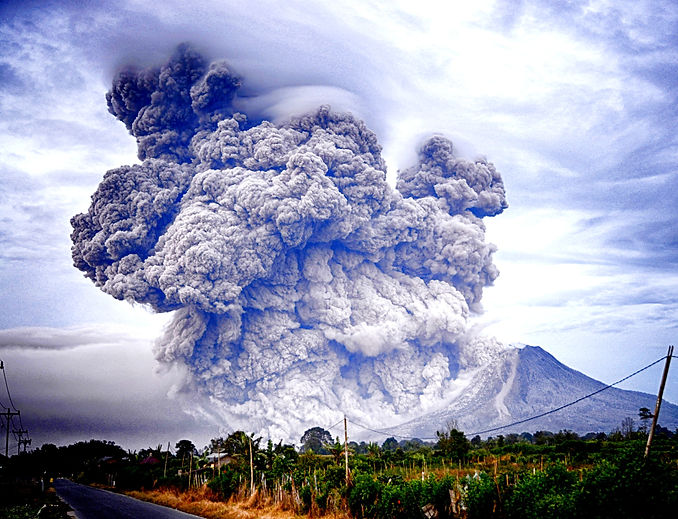Vulkan
Attention: This page is optimized for desktop PCs. For the best viewing experience, please access it in a browser on a computer. Thank you!
Volcanoes are now erupting more and more frequently due to climate change and questions rightly arise as to the extent to which these more frequent volcanic eruptions could influence the climate worldwide.
On this website I provide a wide range of information and the opportunity to discuss things - I am also happy to accept literature on the subject, which I then post here for everyone to read.
(send to: evadust (at) gmx.de)
Here are links from the Internet on this topic and your own conclusions
Discussion for everyone who has actually read and thought through the texts beforehand.
Unfortunately, only the first lines of the text below are displayed on the home page for the blogs, so please click around a bit to read everything.
Below you can read the first blogs in an overview. Thank you for your interest and understanding.


Hello
I started this website about volcanoes in interaction with the climate with the aim of thinking together, supported by facts, about what the climate future could best look like for all of us


Volcanoes erupt more frequently - how will this affect the climate?
https://de.euronews.com/green/2022/03/07/vulkane-und-klimawandel-gibt-es-einen-zusammenhang
Are volcanic eruptions becoming more common?
Yes - if climate change continues like this, 58 percent of volcanoes will receive more heavy rain. With warming of just over three degrees, 42 percent of volcanoes are affected by more frequent rainfall - that's 506 mountains of fire worldwide.
https://www.tagesspiegel.de/wissen/erderwarmung-macht-vulkane-aktiver-6972946.html
Why are so many volcanoes currently erupting? When temperatures rise, ice melts and sea levels rise. This in turn significantly changes the tension in the layers of earth near the volcanoes, increasing the risk of eruptions.
My hypothesis: More volcanoes are erupting with significantly more ash particles due to climate change. The ash particles cool the climate down again. Not forever though, like two years or so. This means everything will take longer until the end of the world.
Volcanic eruption - does the climate cool or warm?
A volcanic eruption is being blamed here for global warming. However, there are reports that the ash particles reflect sunlight and cool the climate. It probably depends on the composition of the erupted material:
Years ago I read scientific analyzes of this by aerosol researchers. If a larger volcano erupts in the tropics, the temperature can be cooled down by an average of 0.5 degrees for two years - if I remember correctly.
The question now is what type the majority of larger volcanoes are - will they emit more ash particles to cool them down or greenhouse gases that actually promote global warming? Can anyone theoretically predict this through appropriate research and analysis, or is it still too unknown what type of eruptions will be in the future?

